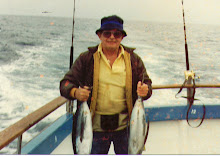The weather just keeps getting better but is still inconsistent. Old man Winter simply wants to hang around as long as he can. Today it's going to be about 55 degrees, then dip down into the twenties tonight and then go up close to 75 tomorrow afternoon. to take advantage of that warmth, I'm going fishing in the Republican River with my friend Steve tomorrow. The walleyes, white and largemouth bass, and some others have moved out of the lake and into the river to spawn. We're going to see if we can relieve the fish congestion in the river and add to the congestion in our freezers. I went fishing at Cedar Point on the lake two days ago and caught a 3 to 4 pound carp, which I sent back to its momma. The lake is still a bit too cold for most of the true game fish to move into the shallows.
My daughter, Eva, and I will start walking the trail by the lake again tomorrow morning. During the winter the auditorium downtown is open for those of who like to walk in the morning and Friday was the last day until next winter. I can only describe it as "round and round we go". Circling the inside of the auditorium 26 times equals one mile of walking. Fella here named Don opens up and brings his boom box with a great blend of CDs to keep us from getting too bored. Most of us who walk are senior citizens trying to stay healthy. Eva, having been born in 1957, has no liking for Glenn Miller and Benny Goodman, but Don does play a set of their music, which suits me just fine. One of the walking couples in their mid to late seventies will occasionally forgo the walking and swing into a dance in the middle of the auditorium when a piece of music really takes them back. I'm not talking gentle waltzing here. I'm talking lively dancing that gets awfully close to the old jitterbug stuff of WWII. Friday they bounced out there when Bill Haley and the Comets started in on "Rock Around The Clock". I do not foresee "rockin' chairs" in the near future for them.


The top picture is a photo I took last summer of one of the clearings along the lake walkway.
At the bottom is what that same general area looks like today. Summer is prettier without a doubt and the process of changing into summer is well along the way. Many of the trees limbs have the little growth nubs that will become leaf and branch with time. Here and there little of spots of green grass are pushing their way into the light. I will be able to watch the change of the season on a daily basis. It's a new experience for this old Angeleno and it's fascinating.
Oh, and by the way, in the state finals for the high school speech teams, my granddaughter's team took fifth place. Not bad for a school with a grade 7 to 12 population of approximately 250 competing against schools from Omaha and Lincoln with populations of 1500 and up. They did a good job.
The migrations of geese and duck are just about finished. For most of this month anybody looking skyward would have seen multiple vee shaped formations of waterfowl heading north. Often the sky was filled with thousands, perhaps tens of thousands, of geese and ducks. I have never before in my life seen such a thing and I don't mind telling you that it was spectacular. They call this area part of the "flyway", and I can certainly see why. I thought I could appreciate the few such formations I would occasionally see in California, but the sights here are often flabbergasting. It makes me appreciative of the need to preserve our wetlands so that these migratory populations will always be able to find a temporary haven. I like to think of myself as a pragmatic conservationist, and by that I mean that while I am an environmentalist, I also think hunting organizations like Ducks Unlimited deserve tons of praise for their efforts to promote wetland preservation. They recognized long ago that without places for the ducks and geese to exist, they would have nothing to hunt. Everybody has benefited. I have no selfish interest in saying good things about a hunting organization. I don't own a firearm of any kind and haven't in over forty years, but plain old practicality tells me people with what may appear to be conflicting interests can find common ground that is helpful to all.











